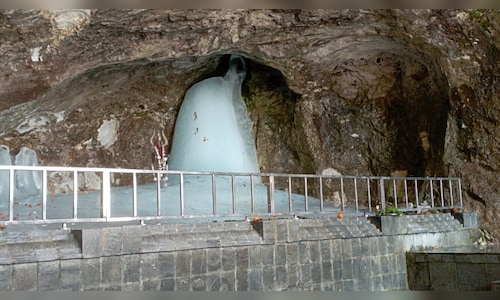Spiritual Significance
The pilgrimage is deeply rooted in Hindu mythology. Amarnath is believed to be the revered location where Lord Shiva imparted the secret of immortality to Goddess Parvati. It serves as a path to spiritual enlightenment and atonement for sins.
Each year, countless devotees make their way to the Amarnath Cave, which is home to a naturally occurring ice Shiva lingam. This lingam is said to transform with the lunar cycle and, according to the SASB, symbolizes Lord Shiva’s immortality and divine power.
Route and Trek Details
The Yatra follows two main routes: the traditional 45-kilometre path from Pahalgam and the shorter 14-kilometre trail from Baltal. The trek is physically challenging, requiring participants to traverse rough terrain and deal with unpredictable weather conditions. Therefore, good physical fitness and proper preparation are crucial.
Health and Safety Guidelines
The SASB has provided a detailed set of health and safety guidelines. Pilgrims are advised to arrive early for acclimatization and to start walking 4–5 kilometres daily at least a month ahead to build their endurance. Staying hydrated, taking regular breaks, and carrying light snacks along with suitable gear are strongly recommended to cope with the altitude and physical demands of the journey.
Registration through official channels is mandatory for obtaining necessary permissions and updates. Pilgrims are also recommended to undergo medical check-ups and pack warm, comfortable clothing alongside appropriate trekking equipment. A well-stocked first-aid kit, prescribed medications, and essential emergency items like a torch and a whistle should also be included in their pack.
Do’s and Don’ts for the Amarnath Yatra 2025
Do’s:
* Collect your RFID card before starting the Yatra.
* Keep the RFID tag around your neck at all times.
* Bring warm clothing, waterproof gear, and valid identification.
Don’ts:
* Refrain from using plastic, which is prohibited along the route.
* Do not take shortcuts or enter restricted areas.
* Avoid wearing slippers; opt for sturdy trekking shoes.
* Don’t ignore any symptoms of high-altitude sickness.
(Edited by : Vivek Dubey)



